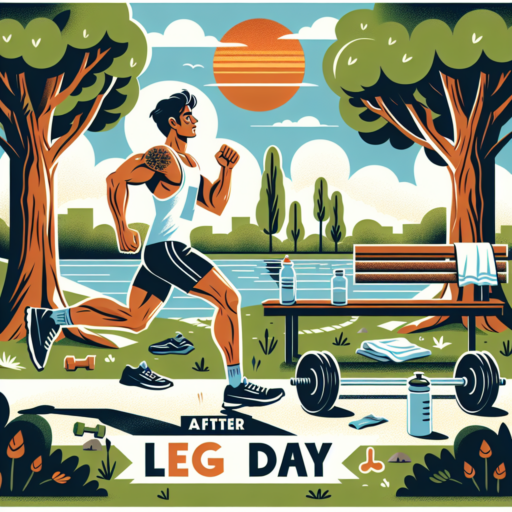What is the proper stride length for running?
Identifying the proper stride length for running is crucial for optimizing performance and minimizing injury risks. A stride that’s too long or too short can lead to inefficiencies and potential physical harm over time. The ideal stride length varies among individuals, influenced by factors like height, leg length, fitness level, and running style. Generally, experts recommend a stride that feels natural and comfortable yet efficient, allowing for a good balance between speed and energy expenditure.
One method to gauge your optimal stride involves calculating your cadence, which is the number of steps you take per minute. Higher cadence with shorter strides is often associated with reduced impact forces on the lower body, which can be beneficial in preventing overuse injuries. A commonly suggested target is around 160-180 steps per minute, but it’s essential to adapt this based on personal comfort and physiological limitations. Experimenting with slight adjustments to your stride length can help you find the most effective cadence for your running form.
It is also beneficial to incorporate strength and flexibility training into your routine to support an optimal stride length. Stronger muscles and more flexible joints enable a wider range of motion and better shock absorption, contributing to more efficient and safer running mechanics. Observing and possibly video analyzing your running pattern can provide valuable insights into your stride length and overall form, facilitating targeted improvements. Remember, any changes to your stride should be gradual to prevent injury and ensure a smooth transition.
No se han encontrado productos.
What is my stride length for my height?
Understanding your stride length is essential for optimizing your walking and running performance. Knowing what your stride length should be for your height can help you improve your exercise efficiency and reduce the risk of injury. Typically, stride length is defined as the distance from the heel of your front foot to the heel of your rear foot during a walking or running motion.
To determine the ideal stride length for your height, many fitness experts suggest a simple calculation: divide your height in inches by 2.5. For example, if you’re 70 inches tall, dividing this number by 2.5 would give you a 28-inch stride. This formula provides a baseline, but it’s important to consider that individual fitness levels and leg lengths can impact your ideal stride.
For those looking to get more scientific, advanced tools and methods can provide a precise measurement. Technologies such as 3D motion capture and smart insoles offer insights into your stride length and how it varies across different terrains and speeds. Remember, while technology can offer accuracy, listening to your body and adjusting based on comfort and performance is also key.
What is the average running stride length for a 5’5″ woman?
Understanding the average running stride length is crucial for runners of all sizes, including those who are 5’5″ tall. Typically, stride length can be influenced by a variety of factors including an individual’s height, leg length, speed, and overall running mechanics. For a woman who stands at 5 feet 5 inches, the average running stride length often falls within a specific range. This measurement is vital for enhancing running efficiency and minimizing the risk of injury.
A runner’s stride length is defined as the distance covered from when one foot touches the ground to when the same foot contacts the ground again. For a 5’5″ woman, the average running stride length typically ranges between 4.5 feet to 5 feet. This estimation is based on the assumption that a runner’s stride length is nearly 1.0 to 1.4 times their height, a general guideline advised by running coaches and sports scientists. However, it’s important to remember that individual variations due to body composition, fitness level, and running style can affect this average.
Optimizing your stride length based on your height and capabilities can lead to more efficient running. Runners, especially women around the height of 5’5″, are often encouraged to focus on stride length as part of their training. Techniques to measure and adjust stride length include tracking runs with a GPS watch, practicing drills that enhance leg turnover, and seeking feedback from running professionals. By paying attention to these details, runners can improve their performance and enjoy a more efficient, injury-free running experience.
How to calculate your running stride length?
Calculating your running stride length is essential for improving your running efficiency and avoiding injury. This can be simply defined as the distance between successive points of initial contact of the same foot, quantifying it can help fine-tune your training regimen.
Steps to Calculate Your Stride Length
To begin, you’ll need a measurable track and a way to mark your starting and ending points. Follow these steps:
- Warm up with a light jog to ensure your stride is natural and representative.
- Mark your starting point and run at your typical pace for at least 20 steps to get an accurate average.
- At the end of your run, mark the point where your last step lands.
- Measure the distance between your starting and finishing points and then divide this by the number of steps taken. This will give you your average stride length.
It’s important to note the variability in stride lengths depending on speed, incline, and personal physical attributes. For a comprehensive understanding, consider calculating your stride at different paces and situations.
In the era of technology, there are also digital tools and apps designed to calculate your stride length with more precision. Using a GPS watch or a smartphone running app can provide immediate feedback on your stride, along with other valuable metrics like pace and total distance covered. Remember, though, that these tools will give you an estimate and may not be as accurate as the manual measurement method.




